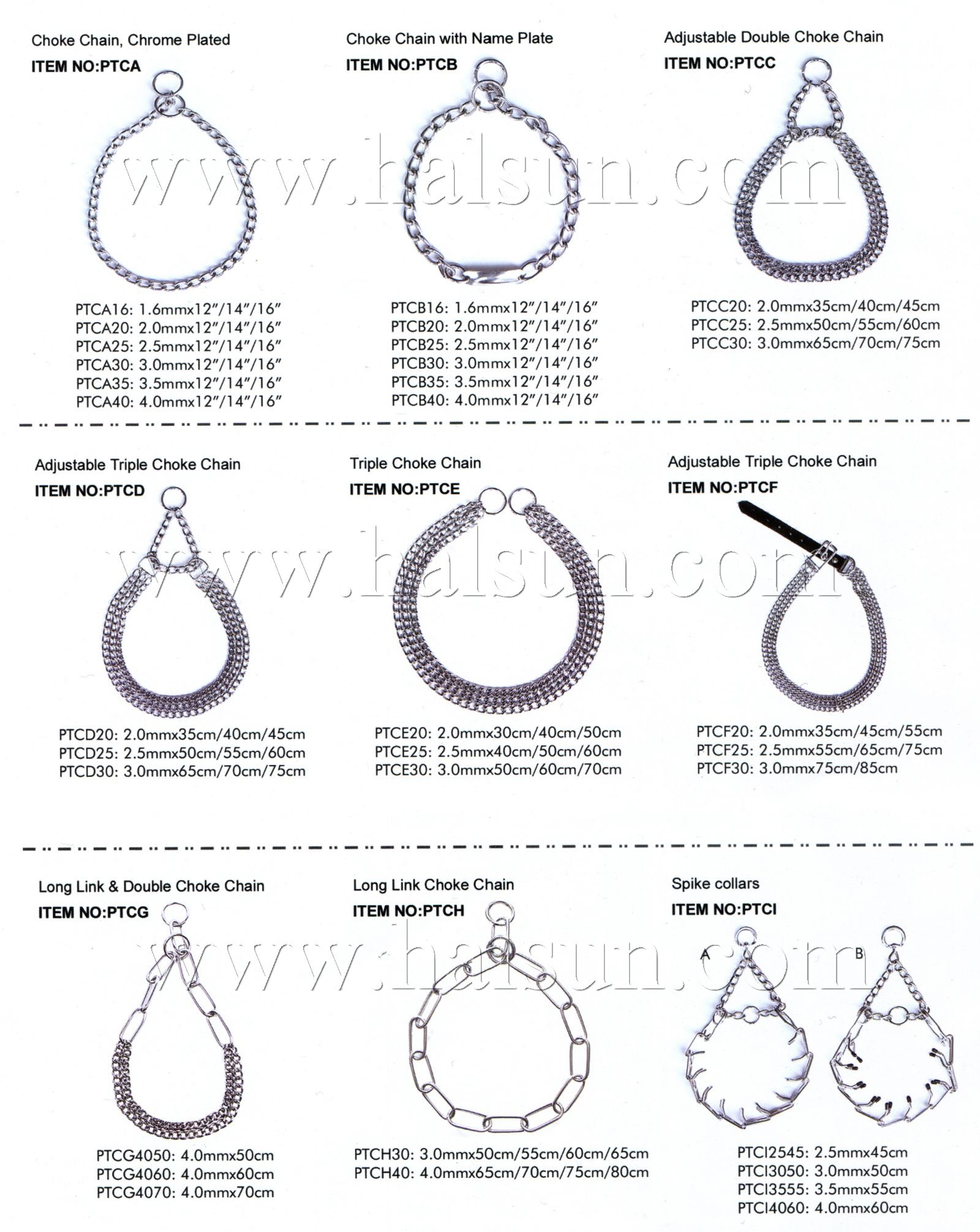
Chroke Chains,Name Plate,Triple,Adjustable,PTCA
Choker collars are made to fit loosely and then to be pulled tight when control is needed. Each collar is measured from end to end and we recommend selecting a collar that is 1-2 inches larger than the neck size of the dog. This will ensure a loose fit, minimize hair snag, and still provide the right amount of control
Choke chains
Choke chain, showing how the chain pulls through the loop at one end.
Choke chains (also called slip collars, choke collars, or slip chains) are a length of chain or nylon rope with rings at either end such that the collar can be formed into a loop around the top of the dog's neck, just behind the ears. The ring that connects to the leash goes over the top of the dog's neck, not under.[8] When the leash is attached to the dead ring the collar does not constrict on the dog's neck. When the leash is attached to the live ring the chain slips (adjusts) tighter when pulled and slips looser when tension is released. A quick jerk with an immediate release, euphemistically called a leash pop, snap, or correction, is used to correct the dog into a 'heel' position.
Prong collar
Prong collars are a series of chain links with blunted open ends turned towards the dog's neck. The design of the prong collar is such that it has a limited circumference unlike check chains which do not have a limit on how far they can constrict on a dog's neck. The limited traction of the martingale chain combined with the angle of the prongs prevents the prongs moving close enough to pinch. The collar is designed to prevent the dog from pulling by applying pressure at each point against the dog's neck.
Prong collars must never be turned inside out (with the prongs facing away from the dog's skin), as this may cause injury against the body and head. [9] Plastic tips are occasionally placed on the ends of the prongs to protect against tufts forming in the fur or, in the case of low quality manufactured collars with rough chisel cut ends, puncturing the skin. Like the check chain, the prong collar is placed high on the dog's neck, just behind the ears, at the most sensitive point.
Some dogs can free themselves from prong collars with large wire looped sides by shaking their head so that the links pop out, so some trainers have come to use a second collar (usually an oversize check chain) in addition to the prong collar so when this happens the dog does not run loose